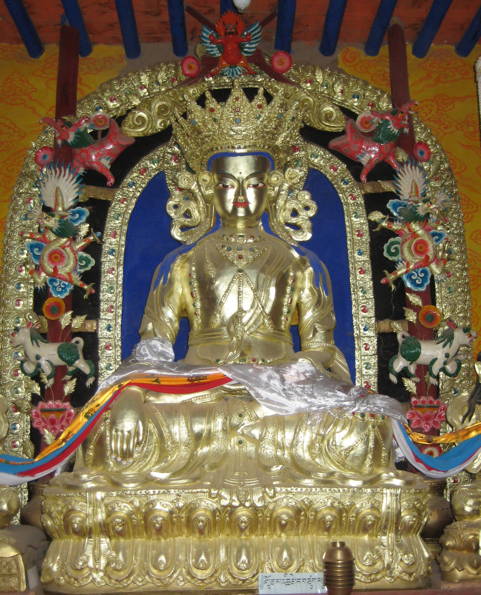
The Yungdrung Bon religion of Tibet is the religion of a substantial minority of Tibetans. While it has many similarities to Tibetan Buddhism, which is the religion of most contemporary Tibetans, it traces its origins back not to the historical Buddha Shakyamuni but to a teacher named Tönpa Shenrab.
Shenrab is regarded by contemporary Bonpo followers as being an enlightened Buddha, and indeed as having attained Buddhahood several hundred years before the historical Buddha, in a country to the west of Tibet , the realm of Ölmo Lungring.
Bon has been variously described as the pre-Buddhist religion of Tibet and as Tibet's indigenous religion, though as mentioned above the Bonpos themselves see their religion as having originated outside Tibet and as having been introduced to Tibet long before the advent of Buddhism. The teachings of Bon are said to have been passed down in the kingdom of Zhang Zhung, in Western Tibet, which was conquered by the pro-Buddhist rulers of Central Tibet in the 7th century. The Bonpo teachings were recovered by visionary lamas (tertön) from the 10th century onwards.
Today, Yungdrung Bon, like Tibetan Buddhism, has lamas, monks, monasteries, temples and lay followers. Bon-po lamas and monks have much the same social and religious role as Buddhist lamas and monks. Bonpo deities and rituals resemble and in many cases are used for the same purposes as Buddhist deities and rituals. While the relationship between Buddhism and Bon has often been antagonistic, the two religions have influenced each other extensively. In 1979, the Bon religion was recognised by the Office of the Dalai Lama at Dharamsala as a valid Tibetan religious tradition, on the same footing as the four Buddhist traditions of Nyingma, Sakya, Kagyu and Gelug.